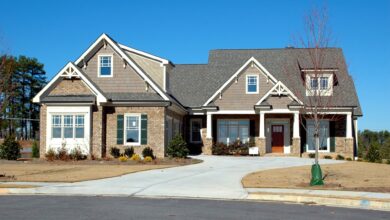Battling Humidity: Preventing Mold And Mildew In South Florida Roofing
Are you tired of dealing with constant mold and mildew issues in your South Florida roofing? The humid climate in this region creates the perfect breeding ground for these pesky problems, but fear not! With the right knowledge and preventative measures, you can take control and keep your roof clean and free from mold and mildew.
nnnnIn this article, we will explore the impact of humidity on roofing and how it can lead to mold and mildew growth. You will learn about proper ventilation techniques that are essential for South Florida roofs, as well as the importance of choosing mold and mildew-resistant materials.
nnnnRegular roof inspections and maintenance play a crucial role in preventing these issues, along with implementing effective moisture control measures.
nnnnWe will also discuss the use of dehumidifiers in problematic areas, as well as preventative measures for gutters and downspouts. And if all else fails, don’t worry – professional mold and mildew remediation services are available to tackle even the most stubborn cases.
nnnnGet ready to take charge of your South Florida roofing by battling humidity head-on. Say goodbye to mold and mildew woes once and for all!
nnnnKey Takeaways
nnnn– Proper ventilation techniques, such as ridge vents, soffit vents, gable vents, and attic fans, are essential for preventing mold and mildew growth on roofs in South Florida’s humid climate.
– Choosing mold and mildew-resistant roofing materials, such as metal, asphalt shingles, or treated clay and concrete tiles, can help prevent damage and costly repairs.
– Regular roof inspections and maintenance are crucial for early detection of mold and mildew growth, preventing costly repairs, and extending the lifespan of the roof.
– Implementing moisture control measures, such as moisture barriers and controlling indoor humidity through proper ventilation and dehumidifiers, helps prevent mold and mildew growth and protects the roof from damage.
Understanding the Impact of Humidity on Roofing
nnnnYou’ll quickly realize the detrimental effects of humidity on your roofing when you witness how it can cause mold and mildew to thrive, leading to costly repairs and potential health hazards.
nnnnHumidity control is crucial for maintaining the structural integrity of your roof. Excessive moisture in the air creates a perfect breeding ground for mold and mildew, which can weaken the materials and compromise the overall strength of your roof. The constant exposure to high levels of humidity can lead to decay, rotting, and even structural damage over time.
nnnnMold growth not only affects the aesthetics of your roof but also poses serious health risks for you and your family. It can trigger allergies, respiratory problems, and other health issues. Therefore, understanding the impact of humidity on roofing is essential for preventing these problems and ensuring a long-lasting, durable roof that protects your home from outside elements effectively.
nnnnProper Ventilation Techniques for South Florida Roofs
nnnnTo effectively manage the climate in South Florida, it’s crucial to ensure proper ventilation techniques are implemented for roofs. This is because high humidity levels can lead to moisture buildup, which can cause mold and mildew growth.
nnnnHere are four essential ventilation techniques that can help prevent these issues and keep your roof in optimal condition:
nnnn1. Ridge Vents: These are installed along the peak of the roof, allowing hot air to escape while drawing in fresh air through soffit vents.
nnnn2. Soffit Vents: These are located under the eaves of the roof and provide intake airflow, ensuring a constant circulation of fresh air throughout the attic space.
nnnn3. Gable Vents: Placed on the gable ends of roofs, these vents allow hot air to escape and promote cross-ventilation.
nnnn4. Attic Fans: These fans actively remove hot air from attics, preventing heat buildup and reducing moisture levels.
nnnnBy incorporating these ventilation techniques into your roof maintenance routine, you can effectively combat humidity and protect your home from mold and mildew damage.
nnnnChoosing Mold and Mildew Resistant Roofing Materials
nnnnWhen it comes to keeping your roof in top condition, it’s important to consider using roofing materials that are resistant to the growth of mold and mildew. Mold and mildew can cause serious damage to your roof, leading to costly repairs or even a complete replacement.
nnnnTo prevent this from happening, you need to choose the right roofing materials that have built-in mold-prevention features. One option is to use metal roofing materials, such as aluminum or steel. These materials aren’t just durable and long-lasting, but they also have natural resistance to mold and mildew growth.
nnnnAnother option is to use asphalt shingles that are specifically designed with mold inhibitors. These shingles contain additives that prevent the growth of mold spores on the surface.
nnnnAdditionally, there are clay and concrete tiles available that have been treated with special coatings or sealants to inhibit the growth of mold and mildew. These options provide a beautiful aesthetic while also protecting your roof from potential damage.
nnnnBy selecting these mold-resistant roofing materials, you can ensure that your roof stays in excellent condition for years to come. Don’t let humidity in South Florida compromise the integrity of your roof; take control by choosing the right materials for maximum roof protection against mold and mildew.
nnnnRegular Roof Inspections and Maintenance
nnnnTake charge of your roof’s health by scheduling regular inspections and maintenance to ensure its long-term durability. Regular maintenance and roof inspections are crucial in preventing mold and mildew growth on your South Florida roofing. Here are three important reasons why you should prioritize these tasks:
nnnn1. Early Detection: Regular inspections allow you to catch any potential issues before they escalate into costly repairs or damage. Trained professionals can identify small leaks, damaged shingles, or areas prone to moisture buildup.
nnnn2. Preventive Measures: By conducting routine maintenance, you can proactively address any concerns and take preventive measures to protect your roof from the humid climate. This may include cleaning gutters, removing debris, or adding protective coatings.
nnnn3. Extend Roof Lifespan: A well-maintained roof has a longer lifespan, saving you money in the long run. Regular inspections help identify areas that need attention, allowing you to address them promptly and prevent further deterioration.
nnnnInvesting time and resources into regular maintenance and roof inspections will provide peace of mind while ensuring the longevity of your South Florida roofing system.
nnnnImplementing Effective Moisture Control Measures
nnnnImplementing effective moisture control measures is essential for maintaining the health and longevity of your roof. In South Florida, where humidity levels are high, it becomes even more crucial to take proactive steps to prevent mold and mildew growth.
nnnnOne way to achieve this is by implementing moisture barriers. These barriers act as a protective layer between the roofing materials and any potential sources of moisture, such as rain or condensation. They help to keep water out and ensure that your roof remains dry and resistant to mold growth.
nnnnControlling indoor humidity is another key aspect of moisture control. High levels of humidity can lead to condensation on the roof surface, which can promote mold and mildew growth. To combat this, make sure your home is properly ventilated and consider using dehumidifiers in areas prone to excess moisture, such as bathrooms or kitchens.
nnnnBy implementing these moisture control measures, you can protect your South Florida roofing from the damaging effects of mold and mildew, ensuring its longevity and structural integrity for years to come.
nnnnUtilizing Dehumidifiers in Problematic Areas
nnnnUtilizing dehumidifiers in problem areas can significantly improve the overall air quality and create a healthier living environment. In humid climates like South Florida, preventing mold and mildew is crucial for maintaining the integrity of your roofing system. Dehumidifiers play a key role in moisture control by removing excess humidity from the air.
nnnnRegular dehumidifier maintenance is essential to ensure proper functioning and maximum efficiency. This includes cleaning or replacing filters, checking drainage systems, and monitoring humidity levels. By investing in a high-quality dehumidifier and keeping up with regular maintenance, you can reap numerous benefits.
nnnnNot only will it help prevent mold growth, but it will also reduce musty odors, minimize condensation on windows and walls, and even extend the lifespan of your roofing materials. Take control of your indoor environment with the power of dehumidifiers.
nnnnPreventative Measures for Gutters and Downspouts
nnnnMaintaining clean and properly functioning gutters and downspouts is crucial for protecting your home from water damage. In the battle against humidity, it’s essential to be proactive when it comes to gutter maintenance.
nnnnRegularly inspecting and cleaning your gutters will help prevent blockages that can lead to water overflow, which in turn can cause mold and mildew growth on your roof. Start by removing any leaves, twigs, or debris that may have accumulated in the gutters.
nnnnNext, use a hose to flush out any remaining dirt or grime. While cleaning the gutters, don’t forget about the downspouts. Ensure they’re clear of obstructions by using a plumber’s snake or a high-pressure nozzle attachment on your hose.
nnnnBy taking these preventative measures regularly, you’ll keep your home dry and protected from potential roof problems caused by excessive humidity in South Florida.
nnnnProfessional Mold and Mildew Remediation Services
nnnnNow that you’ve taken the necessary preventative measures for your gutters and downspouts, it’s time to address another crucial aspect of battling humidity in South Florida roofing: professional mold and mildew remediation services.
nnnnWhen it comes to mold removal, it’s essential to rely on the expertise and experience of professionals who specialize in this field. They have the knowledge and tools required to thoroughly clean and eliminate any traces of mold or mildew from your roof.
nnnnProfessional cleaning is crucial because simply wiping away visible mold may not be enough; there could still be hidden spores lurking beneath the surface. By entrusting this task to experts, you can rest assured that every nook and cranny will be meticulously inspected and treated.
nnnnDon’t compromise when it comes to your home’s health – invest in professional mold and mildew remediation services today.
nnnnConclusion
nnnnIn conclusion, battling humidity and preventing mold and mildew in South Florida roofing requires a knowledgeable and detail-oriented approach.
nnnnBy understanding the impact of humidity on your roof, implementing proper ventilation techniques, choosing mold and mildew-resistant materials, and conducting regular inspections and maintenance, you can protect your roof from damage.
nnnnAdditionally, utilizing effective moisture control measures such as dehumidifiers can further help in preventing mold and mildew growth.
nnnnDon’t forget to pay attention to your gutters and downspouts to prevent water buildup.
nnnnAnd if mold or mildew does become a problem, don’t hesitate to seek professional remediation services for a thorough solution.
nnnnWith these preventative measures in place, you can ensure the longevity and durability of your South Florida roofing system.
n


